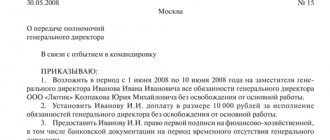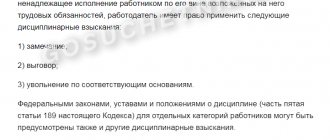What is simple
The Labor Code defines it as a temporary suspension of labor processes in an organization for reasons of an economic, technological, technical or organizational nature. The legislator does not establish a list of possible reasons, but any event that objectively prevents the continuation of work activity is the following reason:
- disaster;
- issuance of regulations that prevent the continuation of activities;
- lack of necessary materials;
- equipment breakdown.
There are reasons:
- due to the fault of the employer;
- independent of the parties;
- due to the fault of employees.
An important feature is the temporary nature of the stop: when the reasons are eliminated, work will continue.
How to announce the start
Since the reasons are different, the documents initiating its introduction are also different. For example, if it is impossible to continue working because the equipment has broken down, the employee supervising work on the equipment sends a report to his superiors about what happened. This informs him about the need to enter a downtime. The memo is preceded by an act by which employees working with equipment record the breakdown and the impossibility of continuing their work. Regardless of the reason for the suspension, an order is issued to declare downtime. The report will become the basis for issuing the order and is attached to it.
Within three days from the moment of stopping work, the organization is obliged to notify the employment service about the suspension and the reasons - this rule is established by clause 2 of Art. 25 of Law No. 1032-1 of April 19, 1991. The form of notification should be clarified with the employment service located at the location of the employer. Notice is required if the employer stops production in whole or in large part. If work is stopped only for certain employees, there is no need to notify the employment office.
How to create an order
The suspension order is drawn up in the form approved by the organization. There is no legally established or recommended form.
The document includes information:
- justification for stopping work. Specify one of four reasons: economic, technological, technical or organizational in nature, without being more specific;
- moment of beginning;
- end moment. If it is difficult to determine the exact moment, write “until the causes are eliminated”;
- a list of employees or departments to which the order applies;
- payment order;
- It is permissible to indicate whether employees go to work during a specified period or can stay at home. The period is working time, so personnel must be at their workplaces. Absence without permission is equivalent to truancy. But if there is no need for employees to be present, the organization has the right to separately indicate in the order that employees are not required to be at the workplace during this period.
The employees who are affected by the order familiarize themselves with it by signing it.
Decor
Worsening external economic factors, the destructive influence of natural disasters, or technological problems that make it impossible to continue working as usual, in themselves bring losses. In this case, management will be able to reduce costs if they correctly document the time of forced downtime due to the fault of the employer:
- Having received notification, in any form, about conditions that have stopped work, you need to make a decision to declare downtime as quickly as possible.
- Identify those at fault (the employee, the employer himself or force majeure);
- Determine the terms; if this is impossible, then the suspension is declared indefinite;
- Resolve the issue of the presence of workers affected by downtime at production;
- Issue an order, it must list all the above details, and also, preferably, explain the form and amount of payment (it depends on the reasons and those responsible);
- Under signature, familiarize the entire team or that part of it that is left without work with it.
- Offer affected employees to transfer to vacant positions while maintaining the average salary for the entire period of downtime.
- Transfer some employees to vacant positions not lower than their previous qualifications, without their consent, but for a period of no more than a month, Art. 72.2 TK.
- Within three days, notify the employment service, clause 2 of Art. 25 of Law 1032-1 Federal Law. This must be done if the entire enterprise has completely stopped work; being late can cost a fine of up to 5,000 rubles, Art. 19.7 Code of Administrative Offences.
- Enter notes about downtime in the working time sheet, form T-13. The accounting code is selected depending on the circumstances: the employer’s fault is indicated by the abbreviation RP or the numerical code 31.
- If the inability to work does not affect all employees, then this must be recorded in free-form acts, and then reflected in the time sheet.
The faster and more carefully the employer prepares all the documents, the more money the company will save on wages. If employees are not notified, and their payment is calculated in a reduced amount, then contacting the labor inspectorate is the least that can threaten the enterprise. It is also illegal to require employees to perform their duties during downtime, even when they are at work all day.
The greatest damage from downtime is caused to the enterprise, regardless of whether the employer is at fault.
The employer does not want to issue idle time
The likelihood that management will refuse to take measures to formalize downtime is very low. After all, it is the enterprise that suffers most from the suspension of production. Another issue is that unscrupulous bosses may try to convince workers to go on unpaid leave during economic difficulties.
It happens that this policy is implemented by a hired company manager, trying to hide the results of short-sighted decisions in the management of the enterprise. The team can protect itself by writing an appeal to the founders with a request to bring the head of the enterprise to disciplinary liability for allowing forced downtime due to the fault of the employer, Article 195 of the Labor Code of the Russian Federation. It can be handed over personally to the head of the meeting of participants or shareholders, or through the mediation of a trade union.
The arbitrariness of management, with the inaction of the management body of a commercial organization, can be suppressed by government agencies for supervision in the field of labor legislation: the labor inspectorate, the prosecutor's office and even the court. You just need to remember that government agencies will require evidence that workers are at work and cannot work fully due to the fault of the employer. Drawing up a collective complaint will be very helpful in protecting your own rights.
During downtime due to the fault of the employer, the employee has the right to count on 2/3 of the salary, minimum, art. 157 TK.
How to write an application
When downtime occurs as a result of global causes (economic shocks, disasters, etc.), management does not need additional notification. But there are situations when management simply cannot find out about troubles until subordinates report to them. This must be done if the breakdown is local, an accident occurs in a separate area, there are no raw materials or materials for work, equipment or the entire production is de-energized. Notification will also be required if downtime began due to the fault of an employee.
The application for forced downtime due to the fault of the employer does not have a legally established form, and therefore is drawn up arbitrarily. However, it would be more correct to title such a document “Report.” Whatever name you choose, you need to write down several very important points inside:
- in whose name the document is drawn up indicating the position, full name and name of the enterprise;
- description of what happened;
- time of first stop of work;
- causes and alleged culprits;
- It is mandatory to have the employee’s signature, as well as the date and time of handing over the paper to immediate superiors.
You can view an example of an application on our website (
)
To be fair, it must be said that the Labor Code of the Russian Federation does not oblige employees to declare the beginning of downtime in writing. Drawing up a paper, it is better to do it in two copies, will be more correct and calmer for the employee. Such actions are all the more relevant if continuation of work is impossible, since it poses a danger to life and health. After all, Art. 214 of the Labor Code simply obliges all employees to report this to senior management.
A notification handed over to management against signature will help the worker further prove his innocence, as well as confirm the fact of a timely contact with the employer.
Continuing to work in conditions hazardous to the health of the employee or other members of the team, without reporting this to superiors or after it, is illegal, Art. 214 TK.
How to draw up an order to end downtime
There is no approved recommended form of termination order, therefore the employer has the right to proceed from the forms of internal documents adopted by him.
The document should indicate:
- details of the document that declared the suspension;
- the reasons for the introduction and an indication that production activities are being resumed;
- return to work date;
- list of employees returning to work.
All employees called to work are notified and introduced to the document for signature.
What does the employee do?
Some workers tend to simplify the situation in the event of an unexpected interruption in work. Whatever the reason for the downtime and no matter how long it lasts (half a day or six months), the employee is obliged to be present on site every day, at the hours established by the employment contract. And although the code does not directly say this, it does not include these hours during the period of legal rest (Article 107 of the Labor Code). In this situation, the conclusion should be drawn: what is not permitted is prohibited.
To be fair, it is worth saying that the employer can mention the obligation to be present at work in the order. There he has the right to both force him to stay in place and allow him to stay at home all this time. The fact that the order does not indicate the need to be present on the territory of the enterprise will not be a permission to miss work. In the event of unauthorized leaving of the workplace or missing days as a result of unfounded conclusions, the employee should not be surprised that he will become a candidate for dismissal for absenteeism, Art. 81 TK.
The need to be present at production during forced downtime due to the fault of the employer may be dictated by:
- the likelihood of emergency situations occurring, then the team on site will be able to quickly eliminate all negative consequences or prevent them altogether;
- the possibility that the reasons for the downtime will disappear suddenly (for example, the electricity supply will be connected), and therefore the time for the start of the resumption of work cannot be predicted;
- the employer is simply not inclined to pay employees the average for their absence from work.
All employees, even if they do not have the opportunity to perform their job functions, must remain on the territory of the enterprise or its structural unit; they will be able to leave the workplace only if such relief is fixed in the downtime order or collective agreement.
How to pay
The issue of payment is regulated by Article 157 of the Labor Code of the Russian Federation. The amount depends on whose fault the work stopped:
- if through the fault of the employer, the employee is paid two-thirds of his average salary. For the calculation, all payments that an employee receives are taken into account, including the tariff rate, bonuses, and allowances;
- if no party is to blame for the suspension of work, the payment is 2/3 of the employee’s tariff rate or salary, without any allowances - such remuneration is lower than if the employer is at fault;
- stoppages caused by the team are not subject to payment.
The issue of payment can be resolved by order to introduce downtime or by a separate order.
Responsibility of employers for violations during quarantine
The level of punishment depends on the severity of the offenses. This can be both administrative and criminal liability, and the norms of the Code of Administrative Offenses of the Russian Federation can be applied only if there are no grounds for applying the provisions of the Criminal Code of the Russian Federation:
- For the very fact of violating labor legislation, a legal entity may be subject to a fine of up to 50,000 rubles (Part 1 of Article 5.27 of the Code of Administrative Offenses of the Russian Federation).
- Another up to 50,000 rubles - for non-payment or incomplete payment of wages (Part 6, Article 5.27 of the Administrative Code).
In case of repeated violation, fines can be doubled, and based on judicial practice, fines can be imposed for each case of such violation, i.e. for each employee in respect of whom a violation occurred.
In case of a longer delay in the PO, the provisions of Article 145.1 of the Criminal Code of the Russian Federation can be used. Next, we will indicate the maximum penalties under the article, implying that there are softer alternatives - prohibitions, labor, etc.:
- Partial non-payment for more than 3 months – imprisonment for up to 1 year.
- Complete non-payment for more than 2 months – up to 3 years in prison.
- Previous conditions, if the consequences were severe - up to 5 years.
In this case, a person who has not previously been prosecuted under this article may be released from criminal prosecution if, within 2 months, he fully repays the debt, including all necessary penalties, additional payments, and compensation.
How to make a payment order
In free form according to the rules adopted in the organization. Reflect the points:
- details of the document confirming the start of the suspension;
- payment procedure: is it calculated from average earnings or from the tariff rate;
- how it is calculated: for example, together with the next salary;
- list of employees who are affected by the payment order.
Each of the employees whose interests are affected by the document gets acquainted with it and signs it.









